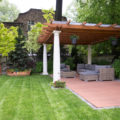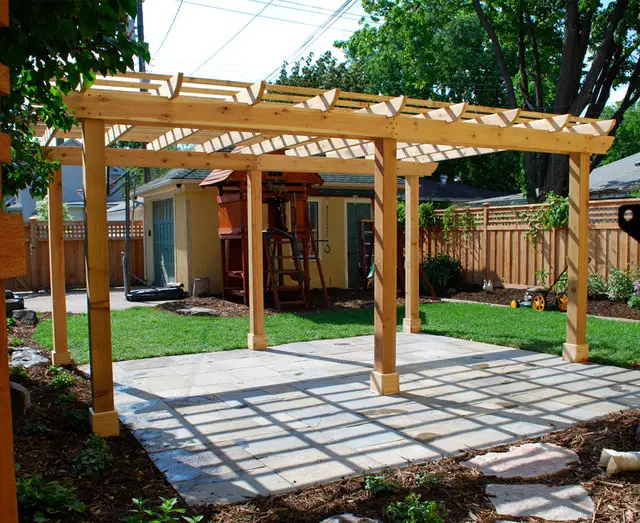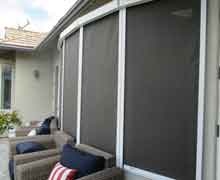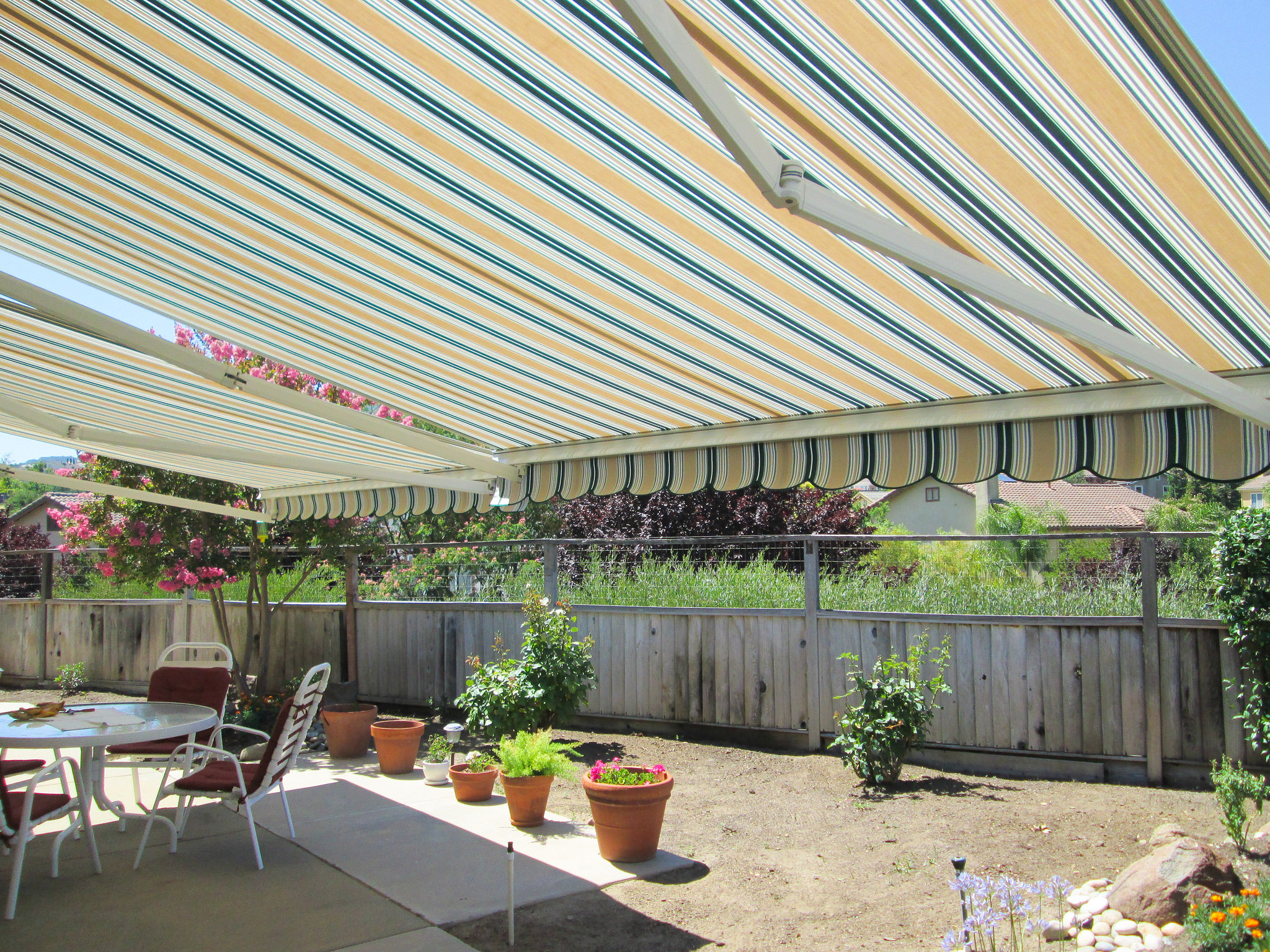Last Updated:July 23, 2025
7 Tips to Make your Gazebo Last Longer

Buying a gazebo for your backyard can be a major purchase. Whether it’s a DIY build, self-install from a kit, or custom build from a professional, you can significantly extend the lifespan of your gazebo with proper maintenance.
We’ve spoken with professional handymen and gazebo owners to get this list of tips. Some people have owned gazebos for more than 20 years which is very possible with proper care. One caveat is that some advice may not apply in all areas. For example, we live in Arizona which is a desert. We never get snow, but have to deal with sandy soil and temperatures exceeding 100 degrees. Please use common sense or consult a professional in your area if the tip will have an impact on your individual shade structure.
1. Paint the Support Beams and Waterproof The Canopy Fabric
Metal beams can rust. Wood beams can get mold, mildew and rot. Regardless of the type of support structure, you will want to apply a protective barrier on the outside. For our exposed wood supports and patio furniture every two years. We also apply multiple coats to extend protection. For metal, we normally do this every fourth year for most stainless and galvanized steel. If you have powder coated steel, you can go 5-10 years before needing to apply any further protection.
If you’re not sure what type of frame you have, the manufacturer should be able to tell you based on the model number. If you don’t know the model number, you can find out by taking a picture and sending it to the company that made it.
When it comes to the fabric for the gazebo that can mold or mildew if it is left to the elements. Some fabrics such as acrylic are far more resistant to molding than others, but you can greatly extend the lifespan of all fabric by using a waterproof spray. The sprays are relatively inexpensive at less than $10 per bottle, and they work by causing the water to bead and roll off the canopy rather than get absorbed. Without the spray outer shell, the fabric never absorbs the moisture keeping its internal fibers dry.
Since there are a lot of options, we have created a complete guide to waterproofing tour gazebo canopy. This includes both the best methods for protecting the canopy as well as our top picks for the best spray to use.
2. Keep Snow Accumulation to a Minimum
I have seen so many gazebos and awnings collapse in the winter when their owners simply don’t clean off the snow. Snow can weigh between 7 and 15 pounds per square foot. (source: http://www.monroect.org/filestorage/467/469/698/750/SNOW_WEIGH_PER_CUBIC.PDF) This means that a 8×10 gazebo with only 6 inches of snow could have an extra 600 pounds of weight on the support. If you let the snow accumulate to a foot, the beams could be supporting more than a half town.
If one beam starts to give, it torques the cross beams which normally results in a complete collapse of the entire gazebo. If you’re in an area that gets a lot of snow, we recommend using a long handle broom or similar tool to push the snow from the roof. Remember, the underside of the roof is exposed to air so it gets no heat from the ground. This means it will melt more slowly and accumulate more snow than you get next to your house if you’re using that as your place for measuring.
3. Check for Termites, Bees, & Other Pests
In many states, termites are a major issue. Since a gazebo can go weeks or months without being used, you may not notice an infestation immediately when it happens. We spray an insecticide on our patio, garage, garden, sidewalk and shaded areas once per month. I am not as diligent on this as I should, and I sometimes go 6 weeks between spraying. My goal isn’t to necessary kill all the insects in our area, but to make our yard a less appealing than our neighbors. I definitely want to keep termites at bay as our current home showed signs of termite damage when we bought it.
If you’re looking for insect repellent, I really like Ortho Home Defense Max . I’ve used this brand for years. The chemicals itself work great, but I am not a fan of the squeeze trigger that comes with the bottle. For some reason after a few uses, it just stops getting the pressure to spray so I picked up a plastic squirt bottle at our local dollar store. This works much better for me, and I have a dedicated bottle solely for insect spray.
4. Repair all Tears or Holes in the Roof
Whether you have a metal roof or a fabric roof, it can develop holes. These will normally start small and grow over time. For a fabric roof, you can get an adhesive tape that will cover the hole. We have written a full guide explaining how to patch a fabric awning roof, and the same instructions apply here. If you catch it small, there will be little long-term damage, and it won’t impact the lifespan of your gazebo. If you let the hole grow large enough, it can impact the structural integrity and would need to be totally replaced.
Metal roofs are a little more tricky. One of our readers reported getting a hole from a tree branch that fell into their gazebo roof. In his case, he hired professional handymen to come in and replace the metal pane of the roof. Our ultimate suggestion is to seek outside and professional expertise if something like this happens.
A quick tip to check for a hole in a gazebo roof is to shine a flashlight underneath your awning towards the sky at night. A second person standing away from the awning can see any small beams of light shining through the roof to identify any small holes.
5. Ensure Anchors are Secure and Tight
Throughout the year, the ground will freeze and thaw. The support beams where they are directly in the ground or encased in a concrete can become loose. You need tension to ensure that they are providing adequate support to the frame. It’s very unlikely for the beam to get loose within the concrete, but you will want to check around the exterior edge of the concrete. We had one reader who had in issue with their irrigation system which caused erosion underneath their paved area. As part of fixing the irrigation system, they had to use fill dirt to replace around the leaking pipe for support. (Editor disclaimer: This was a DIY project by a reader. We would have sought outside help on how to address the erosion).
6. Only use Gazebo Frame to Support Gazebo
I have seen so many pictures of people who drill holes in the frame to hang hammocks, curtains, swings or plant holders. This just isn’t safe. The beams are engineered to handle load in a particular manner. When you drill a hole in them, you are already weakening them. Additionally hanging a hammock or swing can result in adding hundreds of pounds of weight to a beam at a location it was not intended. For the vertical beams, this can cause them to be pulled closer which would make the roof askew and weaker. For the horizontal cross beams near the room, these can snap causing one side or the entire roof to fall in.
Just don’t do this. There are enough free standing swings, hammocks that can be used. If you already have something you want to use consider getting an external pole designed for this purpose. Depending on the quality, these poles can cost $50-100, and this will be far cheaper than the cost of repairing or replacing your entire gazebo roof.
7. Wash after BBQ or Grilling
Growing up, my uncle had their grill and smoker under a gazebo with two picnic tables. Our family went over to their place so many times for cookouts. After the food was finished cooking and we had all eaten more than we probably should, he would take out the hose and spary the entire area with a light mist.
The reason to spray the patio, deck or gazebo is to dilute the odors from the cooking meats. The water spray will push it away from the actual shade structure and get a lot of it absorbed into the ground around the gazebo.
This will lessen the number of pests like racoons, possums, skunks that forage for food.
Conclusion
If you own a gazebo, we’d love to hear from you. You can send us a message on twitter or with our contact us form. We love hearing from readers with any tips or real life experiences they’ve had. In the end, we’re all just home owners who love the #PatioLife, and sharing tips allows everyone a more enjoyable time in their backyard.




